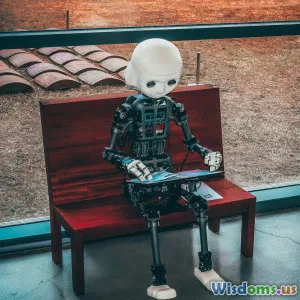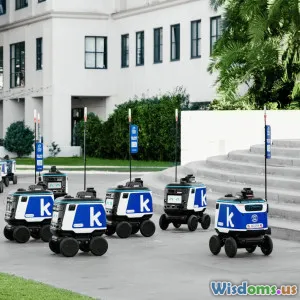
AI and Automation: A New Era of Productivity
7 min read Explore how AI and automation are revolutionizing productivity across industries and reshaping the future of work. (0 Reviews)
AI and Automation: A New Era of Productivity
In today’s fast-paced world, the integration of Artificial Intelligence (AI) and automation is not just a trend; it marks the beginning of a new era in productivity. As businesses strive to remain competitive, these technologies offer unprecedented opportunities to enhance efficiency, reduce costs, and drive innovation. This article delves into the profound impact of AI and automation on various industries, explores how they are reshaping the workforce, and provides insights on maximizing their potential.
The Rise of AI and Automation
Over the past few years, we have witnessed a significant surge in the adoption of AI and automation technologies. According to a report by McKinsey & Company, nearly 70% of companies are expected to adopt at least one type of AI technology by 2030. This rapid evolution has been fueled by advancements in machine learning, data analytics, and robotics, enabling organizations to automate routine tasks and leverage data-driven insights.
Benefits of AI and Automation
-
Increased Efficiency: AI systems can process vast amounts of data at incredible speeds, significantly reducing the time needed for decision-making. For example, in manufacturing, automation can streamline assembly lines, resulting in faster production rates and lower operational costs.
-
Enhanced Accuracy: Automation reduces human error, leading to more precise outcomes. In healthcare, AI algorithms are used to analyze medical images with greater accuracy than human radiologists, improving diagnosis rates.
-
Cost Reduction: By automating repetitive tasks, companies can lower labor costs and reallocate resources to more strategic roles. A study by PwC suggests that automation could lead to a global economic boost of $15 trillion by 2030.
-
Improved Customer Experience: AI-driven chatbots and virtual assistants can provide instant support to customers, enhancing engagement and satisfaction. Companies like Amazon leverage AI to offer personalized recommendations, increasing sales and customer loyalty.
Industries Transformed by AI and Automation
1. Manufacturing
The manufacturing industry has been at the forefront of automation adoption. Robotics and AI technologies are used to optimize production processes, manage supply chains, and predict maintenance needs. For instance, General Motors employs AI to monitor production lines and anticipate equipment failures, minimizing downtime.
2. Healthcare
AI's impact on healthcare is profound, from predictive analytics in patient care to automating administrative tasks. Hospitals use AI-powered systems to manage patient records, schedule appointments, and even assist in surgeries through robotic systems, enhancing both efficiency and patient outcomes.
3. Retail
In retail, AI is reshaping inventory management and customer interactions. Automated systems can analyze purchasing patterns to optimize stock levels, while AI-driven analytics can tailor marketing strategies based on consumer behavior. Companies like Walmart utilize AI to predict demand and manage inventory effectively.
4. Financial Services
The financial sector is leveraging AI for fraud detection, risk assessment, and customer service automation. Algorithms analyze transaction data in real-time to identify suspicious activities, thereby protecting consumers and businesses alike.
The Future Workforce: Adapting to Change
As AI and automation reshape industries, the workforce must adapt. While these technologies may displace certain jobs, they also create new opportunities that require different skill sets. According to the World Economic Forum, by 2025, 85 million jobs may be displaced, but 97 million new roles may emerge that are more suited to the new division of labor between humans and machines.
Reskilling and Upskilling
To thrive in this changing landscape, employees must focus on reskilling and upskilling. Organizations can play a pivotal role by investing in training programs that equip workers with the necessary skills to work alongside AI technologies.
- Critical Thinking: As machines take over routine tasks, skills like critical thinking and problem-solving become invaluable.
- Digital Literacy: Familiarity with AI tools and data analytics will be essential for most roles in the future.
- Creativity: Human creativity and emotional intelligence are attributes that machines cannot replicate, making them crucial in collaborative environments.
Conclusion
AI and automation are undeniably transforming the business landscape, ushering in a new era of productivity. By embracing these technologies, organizations can enhance efficiency, reduce costs, and improve customer experiences. However, it is essential to approach this transition thoughtfully, ensuring that the workforce is prepared to adapt to new roles and responsibilities. As we move forward, the synergy between human intelligence and artificial intelligence will shape a more innovative and productive future.
Ultimately, the journey towards integrating AI and automation is not just about technology; it’s about leveraging these tools to unlock human potential and create a better working environment for everyone.
Rate the Post
User Reviews
Popular Posts





















